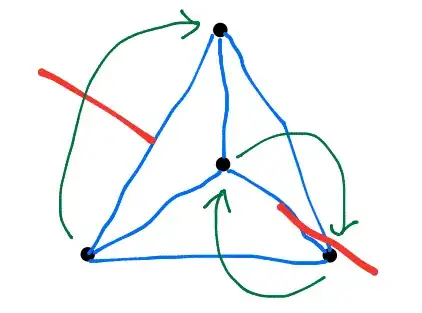I am trying to learn about the symmetries of a regular tetrahedron.
I understand the identity and all eight $120^\circ$ rotations that keep one vertex fixed, $(123),(132),(243),(234),(134),(143),(124),(142)$ but I cannot at all understand how to visualize the so-called $180^\circ$ rotations, i.e., $(13)(24)$ , $(14)(23)$ , $(12)(34)$.
Can anyone suggest anything for this?
